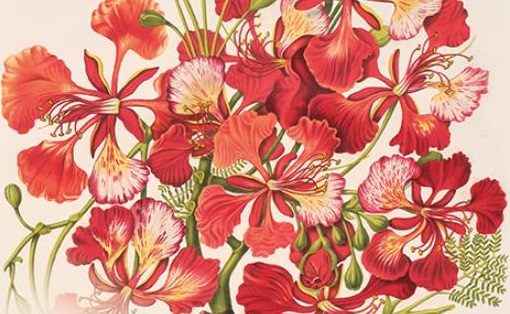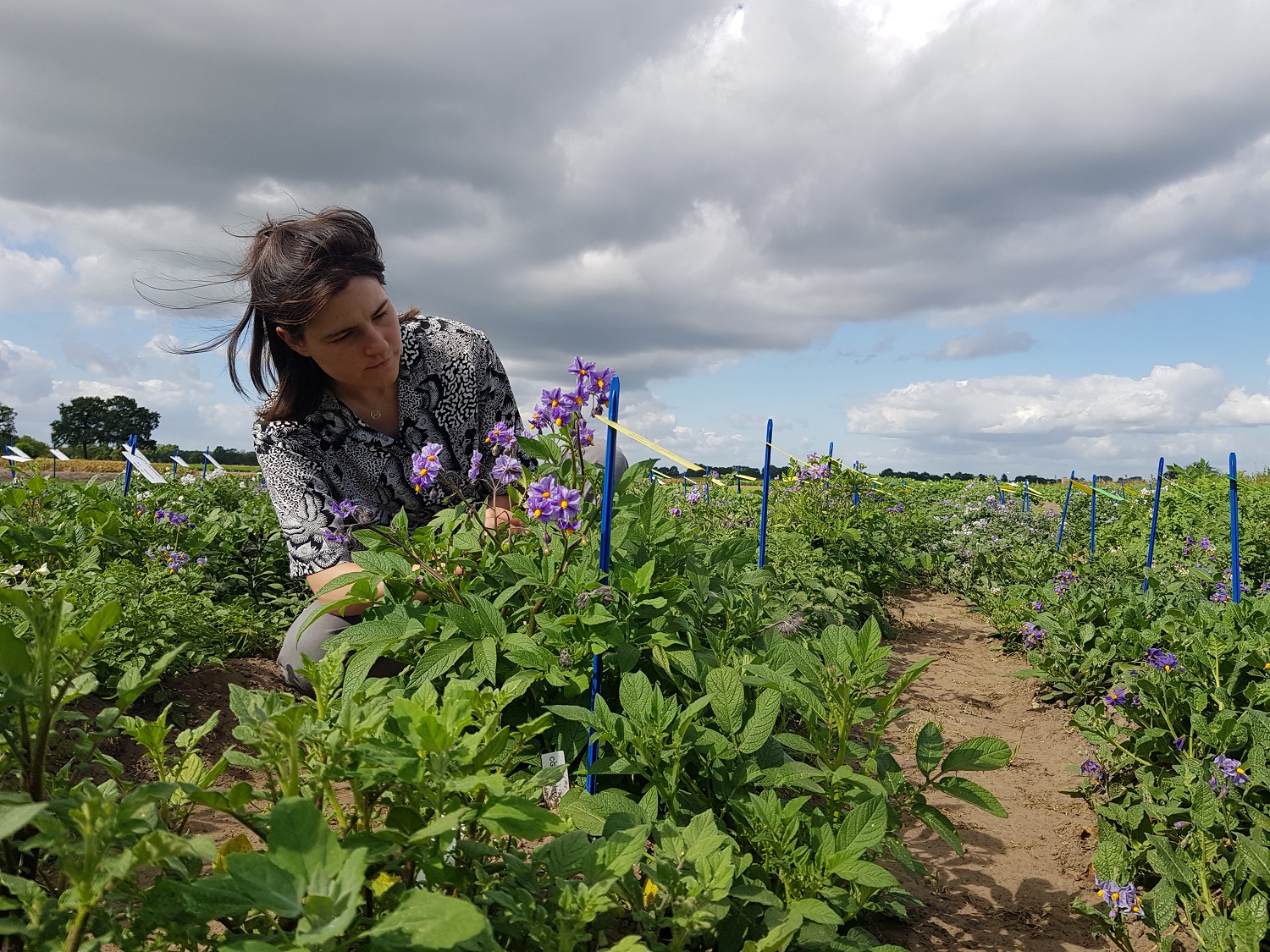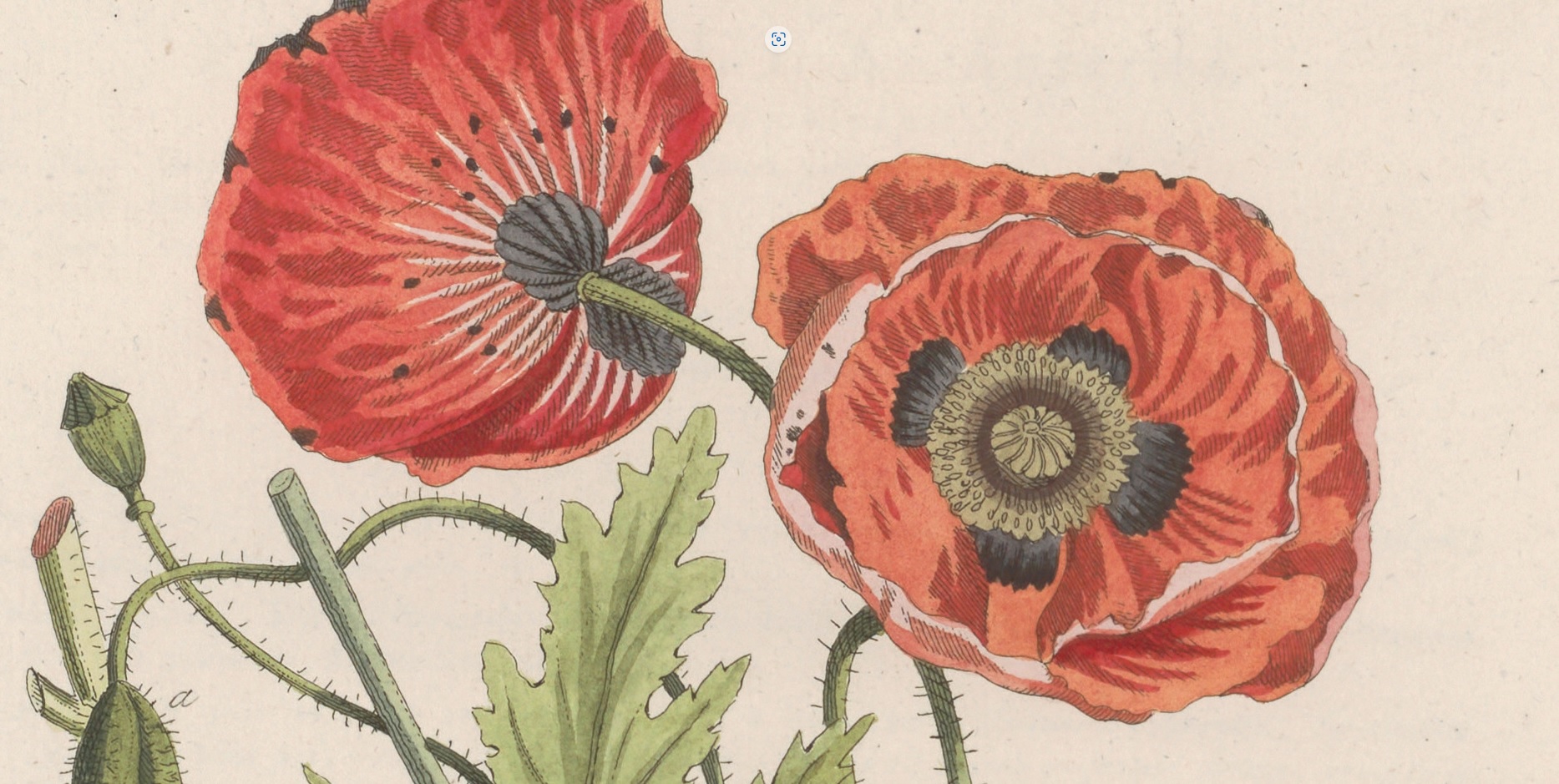The real anniversary was this summer on 17 July. And forty years is not a real anniversary either. Nevertheless, the library’s Special Collections dedicates an exhibition this month to the four decades of collecting at the Centre for Genetic Resources Netherlands. And that in turn provides great material.
The CGN collects and manages genetic sources. Initially only of agricultural crops, but pretty soon after its foundation, this was followed by farm animals, trees and shrubs and – since 2022 – also fish and crustaceans; to prevent biodiversity, genetic variation and cultural heritage from being lost.
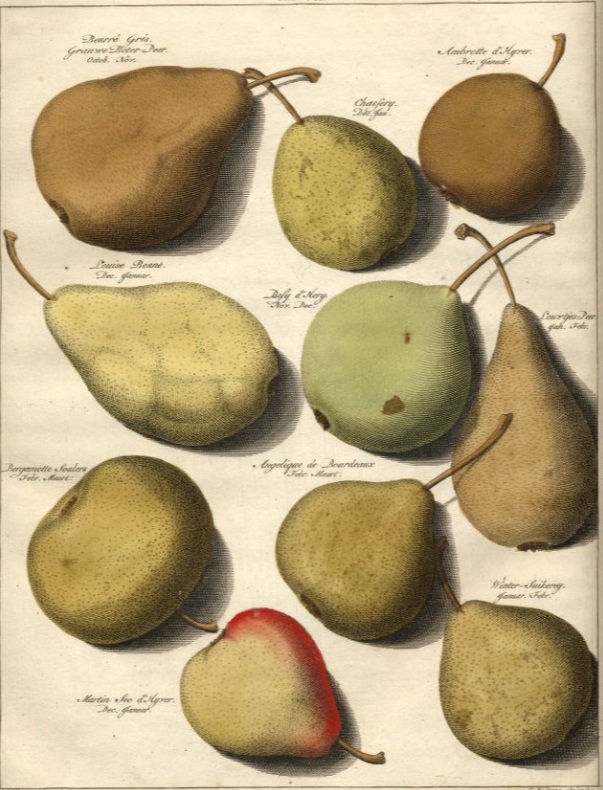
Vavilov
That collecting began with Russian pioneer and botanist Nikolai Vavilov. Early last century, he was one of the first to see the importance of preserving genetic diversity and he built the first gene bank, in St. Petersburg. The exhibition displays a booklet with a dedication written by Vavilov.
‘We only discovered this when we set up an exhibition for the retirement of board chair Louise Fresco,’ says curator Anneke Groen of Special Collections. ‘She wrote the book The Plant Hunter from Leningrad about Vavilov.’ From that gene bank for plant seeds to the Centre for Genetic Resources is then a small step.
They wondered which potatoes are eaten there
Anneke Groen, curator of Special Collections
In fact, according to Groen, Special Collections and the CGN are in the same métier. Whereas CGN manages genetic diversity, Speciale Collections does so with images, descriptions and plaster models of old and rare varieties. The library’s material not infrequently comes in handy in the search for the source of rare breeds and varieties.
A good example occurred recently. Groen: ‘People from the North Brabant Museum are researching Van Gogh’s painting The Potato Eaters. They wondered which potatoes are eaten there. Whether we would have a grower’s catalogue or other source. It is probably a local variety, as the Dutch varieties bintjes or eigenheimers did not yet exist.’
This month
The exhibition about the Centre for Genetic Resources is on display this month only. ‘Another exhibition is planned from 6 November,’ Green apologizes. ‘That’s unfortunate for all the work that has gone into it. ‘But maybe we can make it come back next year.’
Translated with DeepL

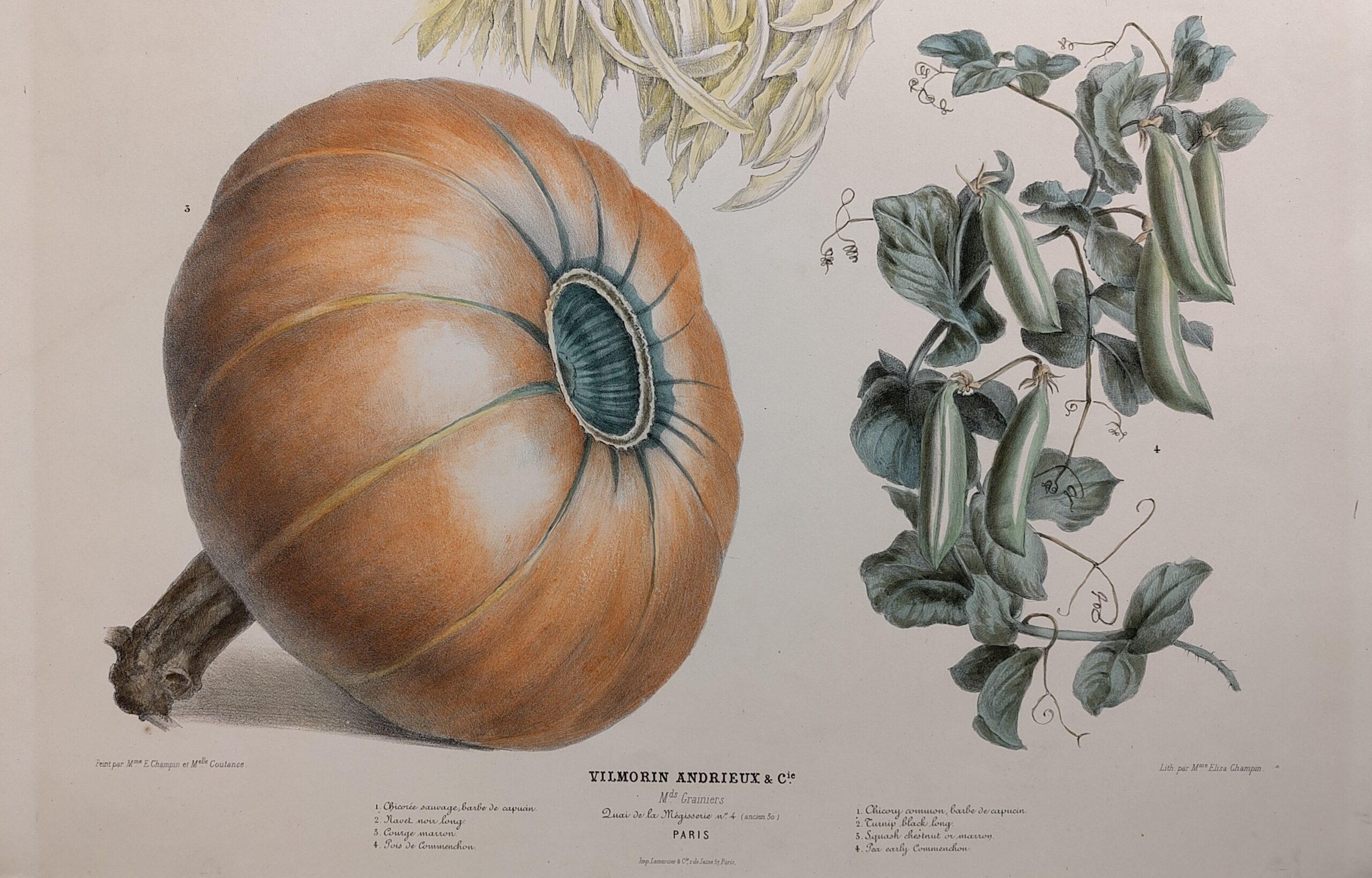 Pumpkin and broad bean, image from a catalogue of the French firm Vilmorin.
Pumpkin and broad bean, image from a catalogue of the French firm Vilmorin. 